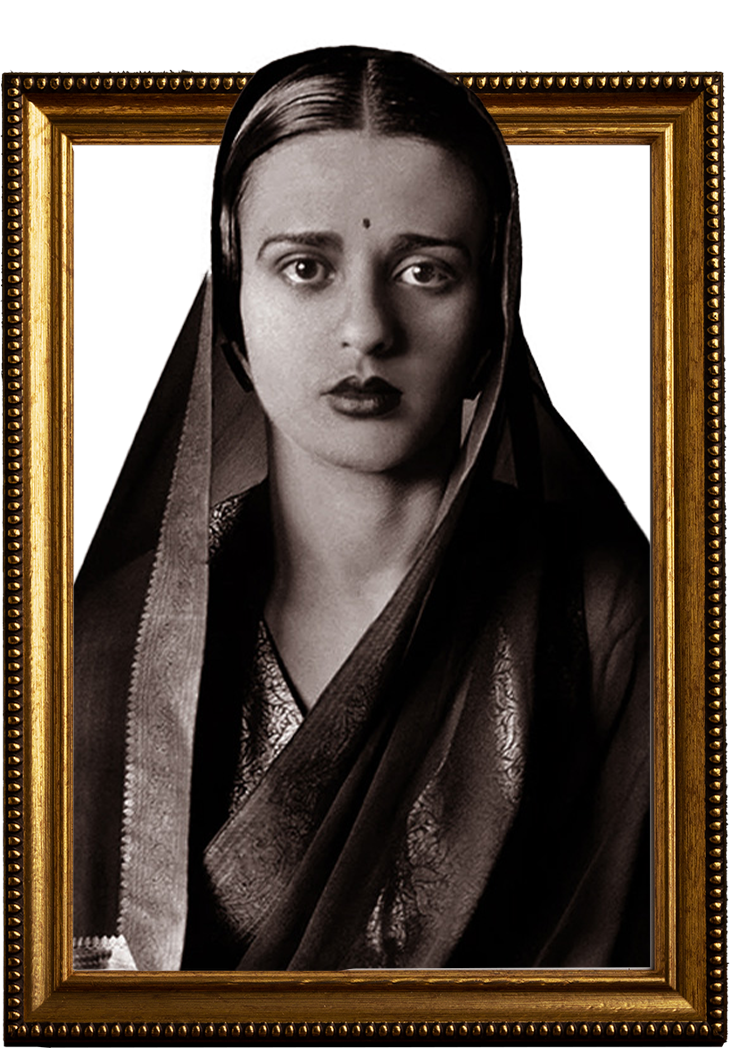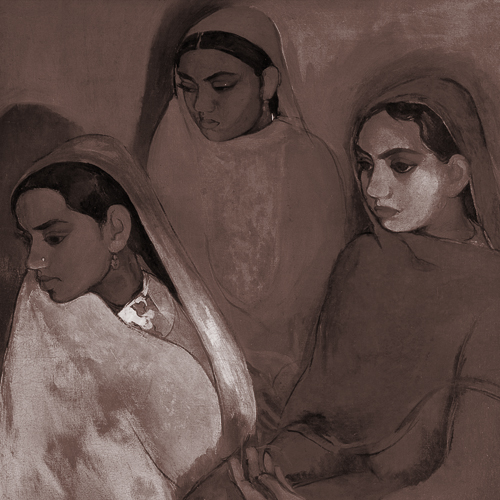
Amrita Sher-Gil
(1913–1941)
Known for: Modern Indian art, fusion of Western and Indian styles, portraying Indian women and rural life
Born: January 30, 1913 – Budapest, Hungary
Died: December 5, 1941 – Lahore, British India (now Pakistan)
Nationality: Indian-Hungarian
Profession: Painter
Movement: Modernism, Post-Impressionism, Indian Renaissance
Early Life and Background
-
Amrita was born to a Punjabi Sikh father, Umrao Singh Sher-Gil, and a Hungarian-Jewish mother, Marie Antoinette, who was a trained opera singer.
-
She was raised in a multicultural and intellectually vibrant environment, exposed to art, literature, and music from a young age.
-
Began painting early, creating sketches and watercolors by the time she was 5 years old.
Education and Artistic Training
-
In 1929, at age 16, she moved to Paris to study at the École des Beaux-Arts, where she was influenced by:
-
Paul Cézanne
-
Paul Gauguin
-
Amedeo Modigliani
-
And the broader Post-Impressionist and Expressionist movements
-
-
In Paris, she created nudes, portraits, and still lifes with rich colors and emotional depth. Her painting “Young Girls” (1932) won a gold medal and critical acclaim.
Timeline: Amrita Sher-Gil

1913 – Born
Born on January 30, 1913, in Budapest, Hungary, to a Punjabi Sikh father and a Hungarian-Jewish mother.

1920s – Early Artistic Talent
Started drawing and painting at age 5. Received private lessons and studied classical piano and violin.

1929 – Moved to Paris
At age 16, began studying at the École des Beaux-Arts in Paris. Influenced by Gauguin, Cézanne, and Modigliani.

1934 – Returned to India
Returned to India and began blending Western techniques with Indian subjects, marking a new artistic phase.

1935 – Painted Three Girls
Created one of her most famous works, Three Girls, portraying rural Indian women with deep emotion and realism.

1937 – South India Series
Traveled to South India and painted a powerful series focused on villagers and rural life, with muted tones and introspection.

1941 – Passed Away
Died on December 5, 1941, in Lahore at age 28, just days before a major solo exhibition. Her death remains a mystery.
Return to India and Artistic Evolution
-
In 1934, she returned to India and rediscovered her cultural identity.
-
Her style shifted dramatically — moving from European realism to a more Indian aesthetic, drawing from:
-
Ajanta cave murals
-
Mughal and Pahari miniature painting
-
Indian village life and people around her
-
-
She began painting everyday Indian subjects — especially women, peasants, and rural communities — with dignity, softness, and psychological depth.
Notable Works:
-
Three Girls (1935)
-
Bride’s Toilet
-
Women on the Charpai
-
South Indian Villagers Going to Market
-
Hill Women
-
Self-Portrait
Her paintings often depicted women in solitude, emotional complexity, and realistic social context — a contrast to idealized portrayals of Indian life by male contemporaries.
Personal Life
-
Amrita was known for her rebellious spirit, bohemian lifestyle, and deep introspection.
-
She was openly critical of colonial and patriarchal norms and embraced her bisexual identity, which was rare and bold for her time.
-
She challenged societal expectations through both her art and personal choices.
Death and Legacy
-
She died unexpectedly on December 5, 1941, at just 28 years old, days before a major solo exhibition in Lahore.
-
The cause of death remains a mystery, but theories include botched surgery, illness, or poisoning.
-
Her death was a huge loss to the Indian art world, as she was just entering her creative prime.
Legacy and Honors
Today, Amrita Sher-Gil is considered a foundational figure in modern Indian art and a feminist icon.
Her legacy includes:
-
Declared a National Treasure Artist of India (by the Indian government) — her works cannot be exported or sold abroad
-
Google Doodle (2013) celebrated her 100th birthday
-
Streets, galleries, and cultural centers across India are named after her
-
Her paintings are housed in:
-
National Gallery of Modern Art (New Delhi)
-
Lahore Museum
-
Private and government collections
-
Famous Quote
“I am an individual. I do not belong to the East or the West.”
— Amrita Sher-Gil
Cultural Impact
-
Her life has inspired documentaries, biographies, exhibitions, and fictional works.
-
She is often compared to Frida Kahlo for her powerful artistic voice, emotional depth, and fearless individuality.

Discover the untold stories of women who shaped the world. Our platform is dedicated to celebrating the lives and legacies of extraordinary women—artists, scientists, educators, and activists—whose contributions have often been overlooked in mainstream history.